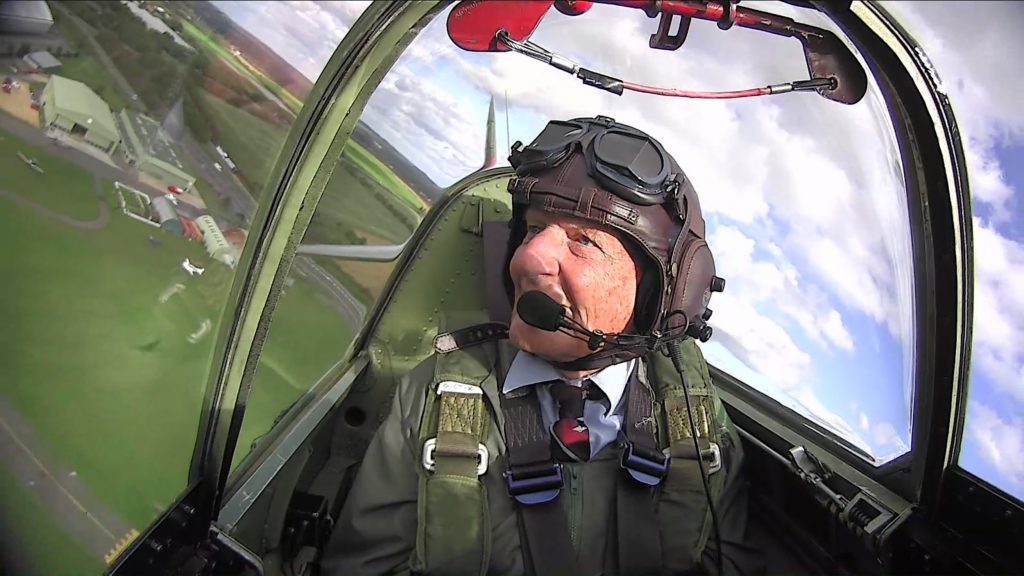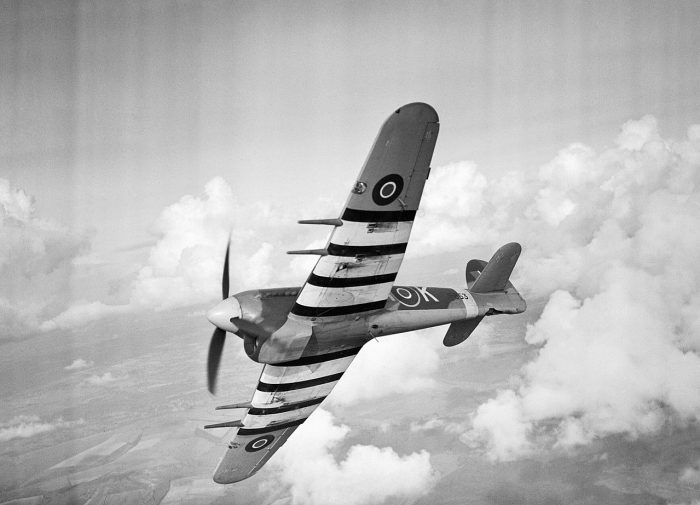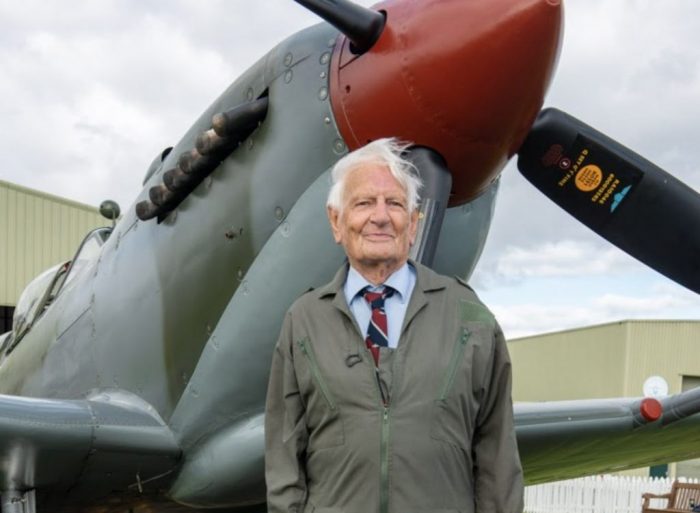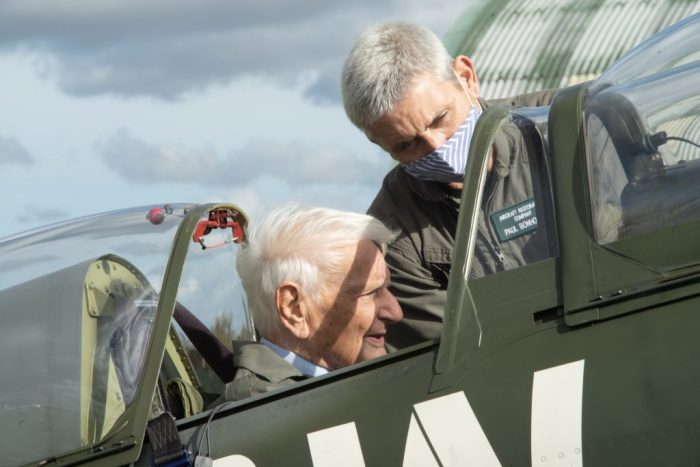Pilot Gets Chance to Live Dream to Fly Spitfire

WWII pilot Bernard Gardiner joined the Royal Air Force in 1940 when he was just 18 years old. He flew Hawker Hurricanes and Hawker Typhoons during the war but always hoped to fly a Spitfire. Unfortunately, he never had the chance.
That is, he hadn’t had the chance until October 3rd this year when the Hawker Typhoon Preservation Group arranged a special flight for the now 98-year-old veteran as a token of appreciation for his tireless support of their organization.

The Preservation Society is working to restore the last known surviving Hawker Typhoon to have seen battle. There is one other Typhoon in working condition, but it never saw battle. Most of the Typhoons were scrapped after the war. HTPG found one that had been force-landed in the Netherlands during the war.
Gardiner, one of the few remaining Typhoon pilots, has been highly supportive of their work.

Gardiner lives in Jersey – an island in the English Channel off of the French coast. He flew in to Duxford, formerly the RAF station where the 56 Squadron introduced the Hawker Typhoon into service. Aircraft Restoration Company (ARCo) provided the Spitfire for Gardiner’s special flight. ARCo is working with the HTPG to restore the Typhoon.
Gardiner’s pilot for the flight was Paul Bonhomme, a three-time Red Bull Air Race champion and the HTPG project ambassador. This was Bonhomme’s first official act as the ambassador.
The plane they flew was a Supermarine Spitfire Tr.9 HF MkIXe fighter. It served in the 73, 326 and 253 Squadrons during World War II. After the war it was modified as a trainer with controls in the second seat.
Somehow everyone involved managed to keep the flight a secret from Gardiner until the last minute. This in spite of having to postpone the original date of the flight due to the COVID-19 restrictions.
Gardiner noted the similarity between the controls he was used to in the Typhoons and Hurricanes he flew. He commented on how easy it was to remember them even after all these years.
Once in the air, Bonhomme handed control over to Gardiner who put the plane through her paces before allowing Bonhomme to take them back in for landing. The old fighter pilot’s smile was visible to all in attendance as they taxied back to the hangar after the flight.

Bonhomme said that taking an old pilot like Gardiner flying was an honor. “We wouldn’t be flying these machines if it wasn’t for people like Bernard…”
80 years after joining the RAF and 38 years after last being in the cockpit of any airplane, Gardiner had finally flown his Spitfire.
1,200 pilots flew the Hawker Typhoon into battle in WWII. 56% of them were killed in battle. Thousands more designed, built, tested, delivered and maintained the planes on the ground. Many of them were killed in the war as well. HTPG is working to create a flying memorial to the legacy of those who sacrificed for their country during the war.
Another Article From Us: Last Remaining XB-70 Rolls Out of Hangar Looking Brand New
HTPG expects that it will take £5million to restore the Typhoon. They have raised £750,000 so far. To donate, visit their website at www.hawkertyphoon.com.
